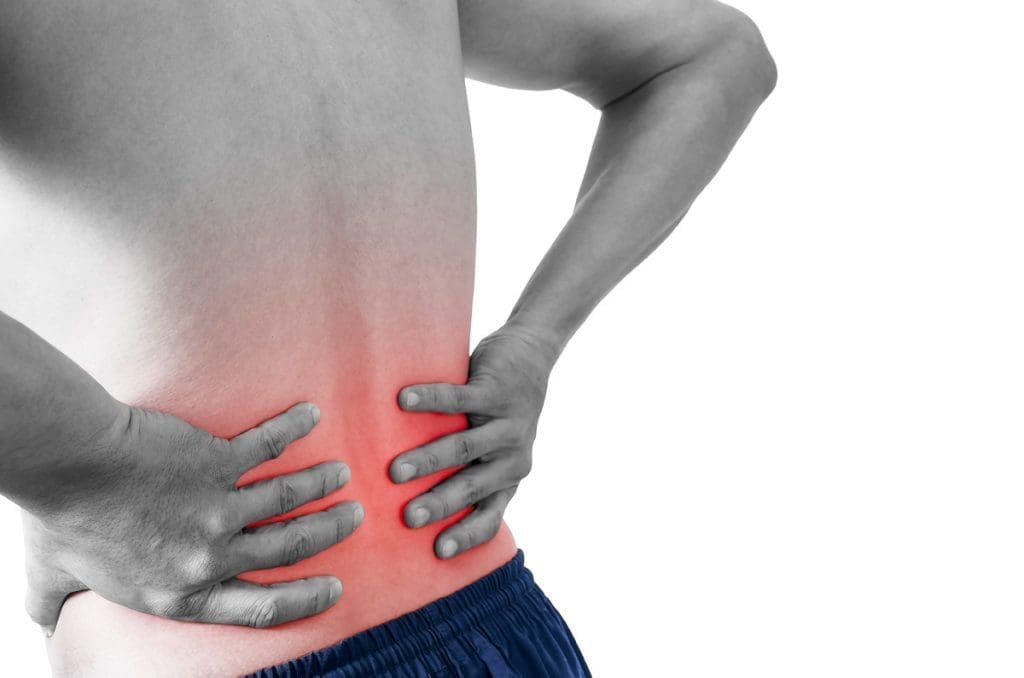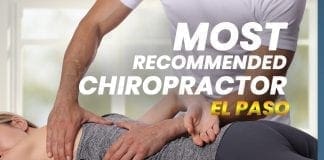Can lumbar traction therapy alleviate an individual’s lower back pain by restoring weak trunk muscles over time?
Table of Contents
Introduction
The trunk muscles are the body’s main stabilizers that support upper body weight and stabilize the lower body weight. These muscles work with the lumbar back muscles so the individual can maintain good posture and be mobile when in motion without pain. However, when traumatic or normal forces start to affect the trunk muscles, it can lead to unwanted musculoskeletal pain that can lead to a life of disability and affect their performance in their routine. Weak truck muscles can lead to low back pain issues while causing referred pain to the lower extremities. However, many individuals are finding ways to strengthen their trunk muscles by slowly integrating core exercises and going to non-surgical treatments to reduce the pain they have been experiencing. Today’s article looks at how weak truck muscles correlate with low back pain and how non-surgical treatments like lumbar traction can reduce pain associated with weak trunk muscles. Additionally, we communicate with certified medical providers who incorporate our patients’ information to ease low back pain associated with weak trunk muscles, causing many musculoskeletal issues in the lower body. We also inform them that non-surgical treatments can help re-strengthen the truck muscles. We encourage our patients to ask amazing educational questions for our associated medical providers about their symptoms correlating with weak trunk muscles. Dr. Jimenez, D.C., incorporates this information as an academic service. Disclaimer
Weak Trunk Muscles Correlate With Low Back Pain
Do you often experience low back pain after carrying a heavy object from one location to another at work? Do you slouch more than usual when you are relaxing at home? Or have you noticed that you can’t hold a plank for less than 30 seconds during a workout? Many individuals dealing with these issues in these scenarios could be dealing with weak core muscles that can lead to low back pain. Since low back pain is a common problem that many people have, some of the correlating factors could be weak trunk muscles. Weak trunk muscles in the body can be due to the body naturally degenerating, causing the intervertebral disc to deteriorate. When the water content and spinal disc height begin to go through mechanical changes from unwanted pressure loads, it can cause the intervertebral discs to bulge out of the spine more and cause the surrounding ligaments and muscles to deal with more stress and become weak over time. (Adams et al., 1990) When the trunk muscles weaken, the lower extremities will start to develop musculoskeletal conditions that can lead to pain. Spinal disorders develop over time when normal or traumatic forces begin to affect the quality and quantity of the trunk muscle functions for its range of motion, strength, and endurance when a person is doing normal activities. (Allen, 1988)

So how would weak trunk muscles and low back pain have this relationship to affect a person’s spine? When muscle activity begins to be reduced within the trunk region, symptoms like stiffness and pain can cause postural shrinkage to the spinal disc in the lumbar region. (Cholewicki, 2004) Additionally, when dealing with low back pain, their trunk muscles undergo structural changes that can affect their stability. These changes can lead to reduced movement speed and range of motion, which then causes many of the accessory muscles to compensate for the pain that the person is experiencing. (Van Dieën, Cholewicki, & Radebold, 2003) However, numerous individuals will opt for a treatment plan to reduce low back pain and also help strengthen weak core muscles.
Can Core Exercises Help With Back Pain?-Video

When it comes to strengthening and restoring weak muscles to reduce low back pain, many individuals will try exercising to lessen the pain they are experiencing in their lumbar spine and strengthen their weakened core muscles. The video above indicates that including core strengthening workouts in a workout routine can be essential to pain management. Exercising alone can be challenging without the right motivation, but it can be included in a personalized treatment plan that can be effective and customizable to manage lumbar impairment. (Li & Bombardier, 2001) Many individuals opt for non-surgical treatments due to their cost-effectiveness and how safe it is on the spine to reduce muscle weakness within the trunk muscles.
Lumbar Traction Restoring Weak Trunk Muscles

When dealing with weak trunk muscles correlating with low back pain, incorporating non-surgical treatment could be the answer to reducing the pain they have been experiencing. Non-surgical treatments like lumbar traction, spinal decompression, massage therapy, physical therapy, and chiropractic care utilize mechanical and manual techniques to reduce pain in the upper and lower body portions, help stretch out shortened and tight muscles, and kick-start the body’s natural healing process. Since lumbar traction is a non-surgical treatment, it can help restore muscle strength within the trunk region. Lumbar traction can be used manually or mechanically to increase intervertebral disc space, decrease mechanical stress, and reduce muscle spasms. (Wegner et al., 2013) When many individuals feel relief from their pain and strengthen their trunk muscles gradually, they will notice a difference in their routine and continue to be pain-free after a few session treatments.
References
Adams, M. A., Dolan, P., Hutton, W. C., & Porter, R. W. (1990). Diurnal changes in spinal mechanics and their clinical significance. J Bone Joint Surg Br, 72(2), 266-270. https://doi.org/10.1302/0301-620X.72B2.2138156
Allen, M. E. (1988). Clinical kinesiology: measurement techniques for spinal disorders. Orthop Rev, 17(11), 1097-1104. https://www.ncbi.nlm.nih.gov/pubmed/3205587
Cholewicki, J. (2004). The effects of lumbosacral orthoses on spine stability: what changes in EMG can be expected? J Orthop Res, 22(5), 1150-1155. https://doi.org/10.1016/j.orthres.2004.01.009
Li, L. C., & Bombardier, C. (2001). Physical therapy management of low back pain: an exploratory survey of therapist approaches. Phys Ther, 81(4), 1018-1028. https://www.ncbi.nlm.nih.gov/pubmed/11276184
Van Dieën, J. H., Cholewicki, J., & Radebold, A. (2003). Trunk Muscle Recruitment Patterns in Patients With Low Back Pain Enhance the Stability of the Lumbar Spine. Spine, 28(8), 834-841. https://doi.org/10.1097/01.brs.0000058939.51147.55
Wegner, I., Widyahening, I. S., van Tulder, M. W., Blomberg, S. E., de Vet, H. C., Bronfort, G., Bouter, L. M., & van der Heijden, G. J. (2013). Traction for low-back pain with or without sciatica. Cochrane Database Syst Rev, 2013(8), CD003010. https://doi.org/10.1002/14651858.CD003010.pub5
Disclaimer
Professional Scope of Practice *
The information herein on "Trunk Muscle Response To Lumbar Traction Therapy" is not intended to replace a one-on-one relationship with a qualified health care professional or licensed physician and is not medical advice. We encourage you to make healthcare decisions based on your research and partnership with a qualified healthcare professional.
Blog Information & Scope Discussions
Welcome to El Paso's Premier Wellness and Injury Care Clinic & Wellness Blog, where Dr. Alex Jimenez, DC, FNP-C, a Multi-State board-certified Family Practice Nurse Practitioner (FNP-BC) and Chiropractor (DC), presents insights on how our multidisciplinary team is dedicated to holistic healing and personalized care. Our practice aligns with evidence-based treatment protocols inspired by integrative medicine principles, similar to those found on this site and our family practice-based chiromed.com site, focusing on restoring health naturally for patients of all ages.
Our areas of multidisciplinary practice include Wellness & Nutrition, Chronic Pain, Personal Injury, Auto Accident Care, Work Injuries, Back Injury, Low Back Pain, Neck Pain, Migraine Headaches, Sports Injuries, Severe Sciatica, Scoliosis, Complex Herniated Discs, Fibromyalgia, Chronic Pain, Complex Injuries, Stress Management, Functional Medicine Treatments, and in-scope care protocols.
Our information scope is multidisciplinary, focusing on musculoskeletal and physical medicine, wellness, contributing etiological viscerosomatic disturbances within clinical presentations, associated somato-visceral reflex clinical dynamics, subluxation complexes, sensitive health issues, and functional medicine articles, topics, and discussions.
We provide and present clinical collaboration with specialists from various disciplines. Each specialist is governed by their professional scope of practice and their jurisdiction of licensure. We use functional health & wellness protocols to treat and support care for musculoskeletal injuries or disorders.
Our videos, posts, topics, and insights address clinical matters and issues that are directly or indirectly related to our clinical scope of practice.
Our office has made a reasonable effort to provide supportive citations and has identified relevant research studies that support our posts. We provide copies of supporting research studies upon request to regulatory boards and the public.
We understand that we cover matters that require an additional explanation of how they may assist in a particular care plan or treatment protocol; therefore, to discuss the subject matter above further, please feel free to ask Dr. Alex Jimenez, DC, APRN, FNP-BC, or contact us at 915-850-0900.
We are here to help you and your family.
Blessings
Dr. Alex Jimenez DC, MSACP, APRN, FNP-BC*, CCST, IFMCP, CFMP, ATN
email: coach@elpasofunctionalmedicine.com
Multidisciplinary Licensing & Board Certifications:
Licensed as a Doctor of Chiropractic (DC) in Texas & New Mexico*
Texas DC License #: TX5807, Verified: TX5807
New Mexico DC License #: NM-DC2182, Verified: NM-DC2182
Licensed as a Multi-State Advanced Practice Registered Nurse (APRN*) in Texas & Multistate
Multistate Compact RN License by Endorsement (42 States)
Texas APRN License #: 1191402, Verified: 1191402 *
Florida APRN License #: 11043890, Verified: APRN11043890 *
* Prescriptive Authority Authorized
ANCC FNP-BC: Board Certified Nurse Practitioner*
Compact Status: Multi-State License: Authorized to Practice in 40 States*
Graduate with Honors: ICHS: MSN-FNP (Family Nurse Practitioner Program)
Degree Granted. Master's in Family Practice MSN Diploma (Cum Laude)
Dr. Alex Jimenez, DC, APRN, FNP-BC*, CFMP, IFMCP, ATN, CCST
My Digital Business Card
RN: Registered Nurse
APRNP: Advanced Practice Registered Nurse
FNP: Family Practice Specialization
DC: Doctor of Chiropractic
CFMP: Certified Functional Medicine Provider
IFMCP: Institute of Functional Medicine
CCST: Certified Chiropractic Spinal Trauma
ATN: Advanced Translational Neutrogenomics














